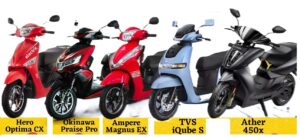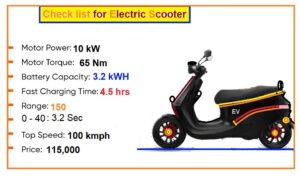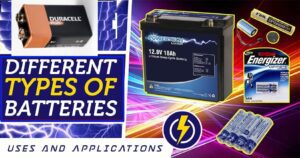What are the major issues of Battery Charging in EVs?
- The demand for electric vehicles has been increased but there are issues in battery charging after some period of times
- Replacement of battery is expensive initially
- some major issues related to charging in electric vehicles (EVs) include:
Limited Charging Infrastructure:
- The availability and accessibility of charging stations, especially fast-charging stations
- It can be limited in certain areas, leading to range anxiety and inconvenience for EV owners.

Low Charging Speed:
-
- Different charging standards and levels (such as Level 1, Level 2, and DC fast charging) offer varying charging speeds.
- Inconsistent charging speeds and compatibility issues can affect the user experience.
Range Anxiety
-
- The fear of running out of battery power before reaching a charging station is a significant concern for EV drivers especially on long trips or in areas with limited charging infrastructure.

Charging Time:
- Even with fast-charging options, EVs typically take longer to charge compared to refueling a gasoline or diesel vehicle. Long charging times can be inconvenient for drivers who need quick turnaround times.
- Battery Degradation: Over time, the capacity of an EV battery can degrade, reducing its range and requiring more frequent charging. Managing battery health and lifespan is crucial for EV owners.
- Charging Costs: The cost of charging can vary depending on the charging station, electricity rates, and charging speed. Understanding and managing charging costs is important for EV owners to optimize their expenses.
- Technical Issues: EVs may experience technical issues with the charging port, onboard charger, or battery management system, leading to charging failures, slower charging speeds, or other operational challenges.
- Addressing these issues requires a coordinated effort from automakers, charging infrastructure providers, government agencies, and consumers to improve charging infrastructure, standardize charging protocols
- Enhance charging speed and efficiency, educate users about charging best practices, and develop advanced battery technologies.

Best 10 Ways to improve Battery Life
- Improving battery life in electric vehicles (EVs) involves several strategies aimed at optimizing the performance and longevity of the battery pack.
- Here are some tips to help improve battery life in EVs:
- Avoid Deep Discharges:
- Try to avoid fully depleting the battery regularly, as deep discharges can accelerate battery degradation.
- Instead, aim to keep the battery charge level within a moderate range, typically between 20% and 80%.
- Use Regenerative Braking:
- Take advantage of regenerative braking systems, which capture energy during braking and deceleration to recharge the battery.
- This can help reduce the strain on the battery and improve overall efficiency.
- Optimize Charging Practices:
- Follow best practices for charging, such as using a level 2 charger whenever possible for faster and more efficient charging.
- Avoid frequent use of DC fast chargers unless necessary, as rapid charging can generate more heat and stress on the battery.
- Manage Temperature:
- Keep the battery within an optimal temperature range for operation.
- Extreme temperatures, both hot and cold, can affect battery performance and longevity.
- Parking in shaded areas or using climate control features to pre-condition the battery can help manage temperature.
- Minimize High-Speed Driving:
- High-speed driving can increase energy consumption and put more strain on the battery.
- Whenever feasible, maintain moderate speeds to improve efficiency and reduce battery wear.
- Reduce Use of High-Power Accessories:
- Minimize the use of high-power accessories such as heated seats, air conditioning, and entertainment systems, especially when the battery charge is low.
- These accessories can drain the battery more quickly.
- Plan Efficient Routes:
- Plan routes that optimize energy efficiency, such as avoiding steep inclines or heavy traffic congestion whenever possible.
- Smooth driving and gradual acceleration also contribute to better energy management.
- Regular Maintenance:
- Follow the manufacturer’s recommended maintenance schedule for the EV, including battery inspections and software updates.
- Proper maintenance can help identify potential issues early and ensure optimal battery performance.
- Storage Considerations:
- If the EV will be stored for an extended period, follow guidelines for battery storage to prevent deep discharge or overcharging..
- Maintaining a partial charge and storing the vehicle in a cool, dry environment can help preserve the battery.

Battery Replacement for electric vehicles (EVs)
- Replacing the battery in an electric vehicle (EV) is a complex process that typically requires specialized tools and expertise.
- Due to the complexity and safety considerations involved, battery replacement for EVs is often carried out by authorized service centers or technicians trained in EV maintenance and repair.
- DIY replacement is generally not recommended due to the technical expertise and specialized equipment required.
- Here’s a general outline of how battery replacement for EVs is typically done:
- Diagnostic Assessment:
- Before replacing the battery, the EV should undergo a thorough diagnostic assessment to identify any issues with the battery pack or related components.
- This assessment may involve using diagnostic tools and software to analyze the battery’s performance and health.
- Safety Precautions:
- Safety is paramount when working with high-voltage battery systems.
- Technicians should follow proper safety protocols, including wearing appropriate personal protective equipment (PPE) and disconnecting the vehicle from the power source.
- Battery Removal:
- The process of removing the old battery pack can vary depending on the vehicle’s make and model.
- It often involves disconnecting electrical connections, cooling systems, and structural components that secure the battery in place.
- Installation of New Battery:
- Once the old battery pack is removed, the new battery pack can be installed.
- This involves securing the new pack in place, reconnecting electrical and cooling systems, and ensuring proper alignment and fitment within the vehicle.
- Programming and Calibration:
- After installing the new battery pack, the EV’s onboard systems may need to be programmed and calibrated to recognize the new battery and ensure proper functionality.
- This may require specialized software and tools that are specific to the EV manufacturer.
- Testing and Validation:
- Once the replacement process is complete, the EV should undergo thorough testing to validate the performance and functionality of the new battery pack.
- This testing may include charging tests, voltage checks, and system diagnostics to ensure everything is working correctly.
- Documentation and Reporting: It’s important to document the battery replacement process, including any diagnostic results, installation procedures, and test outcomes. This documentation helps maintain records and ensures accountability for the work performed.

Cost of Battery Replacement
- The cost of battery replacement for electric vehicles (EVs) can vary widely depending on several factors such as the make and model of the vehicle, the capacity and type of battery, and whether the vehicle is still under warranty or not. Here are some general considerations:
- Battery Type: The type of battery used in the EV can significantly impact the replacement cost. Lithium-ion batteries, which are common in EVs, can be expensive to replace compared to other battery types.
- Battery Capacity: The size and capacity of the battery pack also play a role. Larger battery packs with higher energy storage capacities will generally cost more to replace than smaller packs.
- Vehicle Make and Model: Different automakers may have varying costs for battery replacement. Premium or luxury EVs may have higher replacement costs compared to entry-level or mid-range models.
- Warranty Coverage: Many EV manufacturers offer warranties specifically for the battery pack. Depending on the warranty terms, battery replacement costs may be partially or fully covered within the warranty period.
- Market Factors: The availability of replacement batteries, market demand, and technological advancements can influence the cost of battery replacement over time. Prices may decrease as battery technology evolves and becomes more widespread.
- Labor Costs: In addition to the cost of the battery pack itself, labor costs for removing the old battery and installing the new one can also contribute to the overall replacement cost.

Summary
- By adopting these practices, EV owners can help improve battery life, maximize range, and maintain the overall health of the battery pack over time.
- As of now, a rough estimate for battery replacement in an EV can range from several thousand dollars to tens of thousands of dollars, with high-capacity and premium EVs typically having higher replacement costs.
- It’s essential for EV owners to consider potential battery replacement costs when evaluating the long-term ownership expenses of an electric vehicle.
